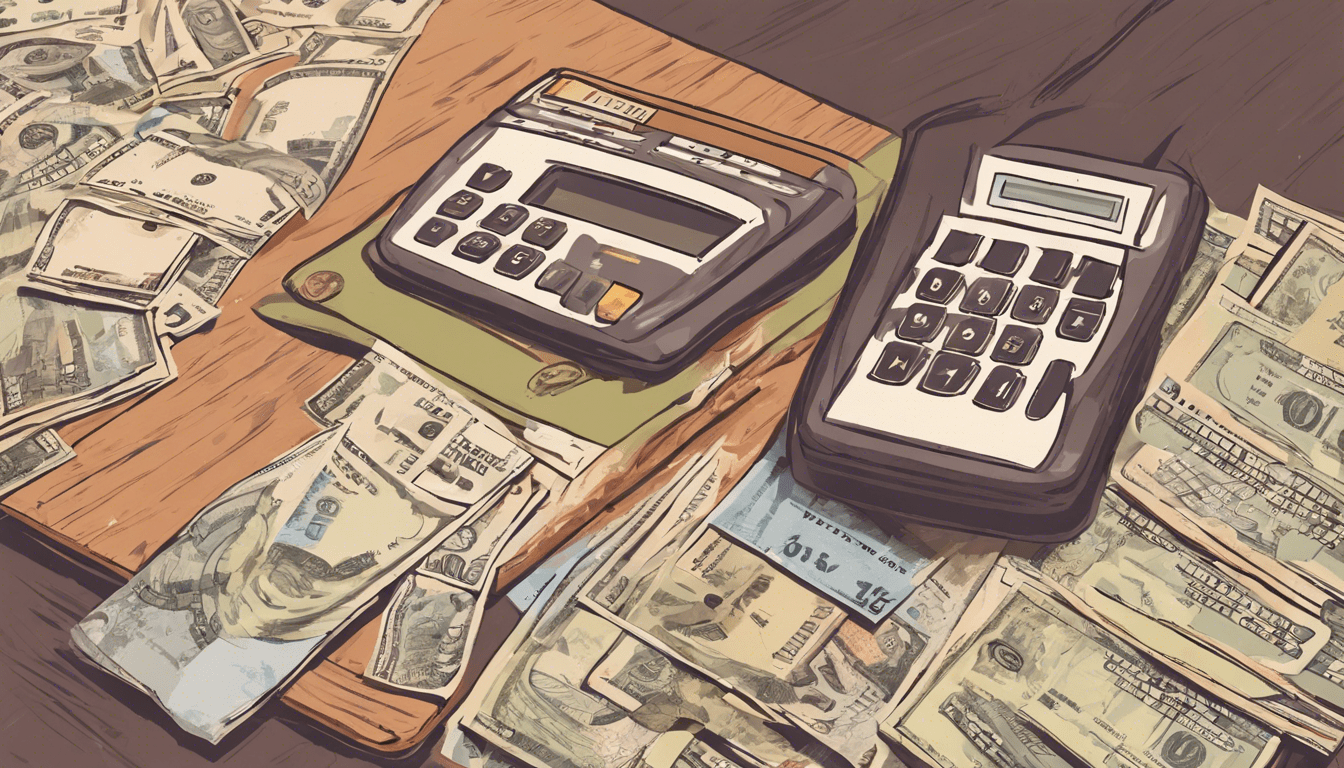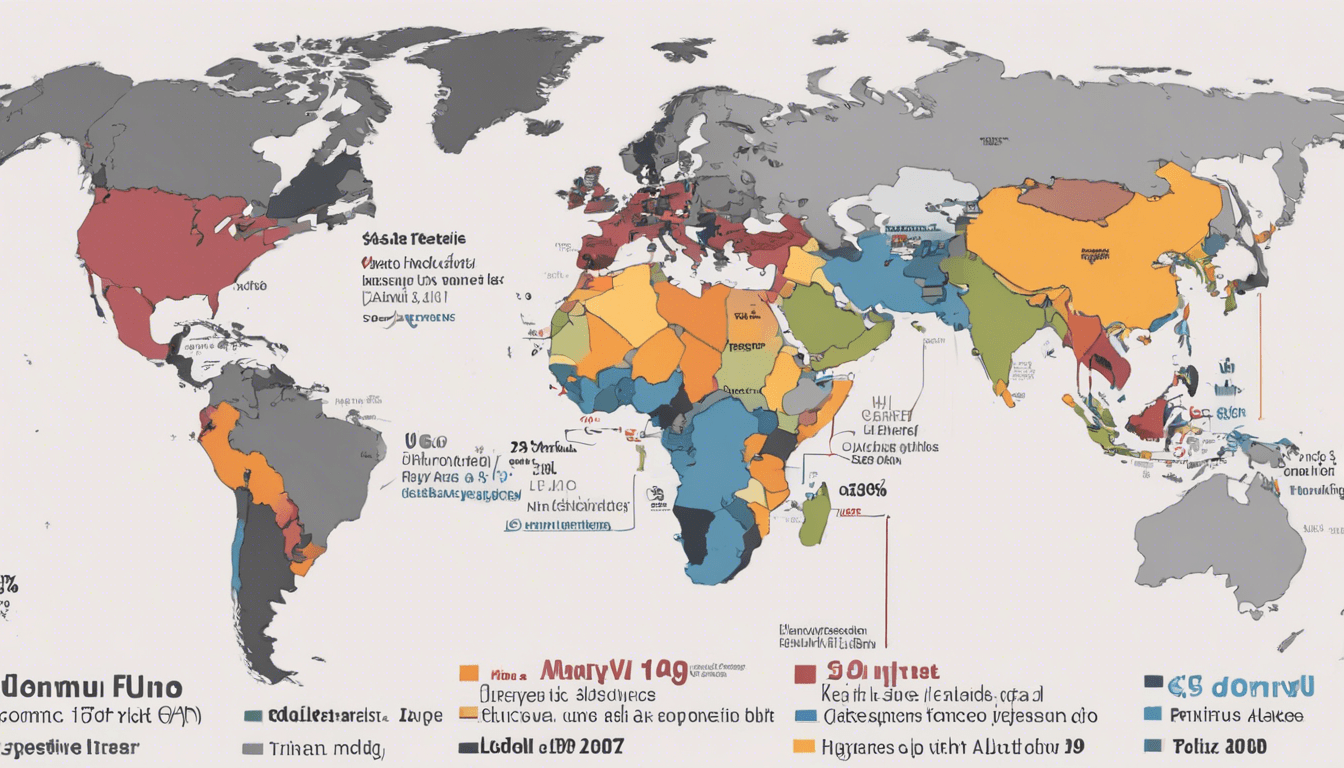Microeconomics: A Comprehensive Guide

Microeconomics: A Comprehensive Guide
Introduction to Microeconomics
Microeconomics is the department of economics that focuses on the behaviors and selections of particular person brokers, corresponding to shoppers and companies, inside an economic system. It examines how these entities work together in markets, the allocation of scarce sources and the pricing mechanisms that come up from provide and demand. Understanding microeconomics is essential for greedy the broader financial panorama and making knowledgeable selections in each enterprise and private finance.
Microeconomics: A Comprehensive GuideThe Importance of Microeconomics
Microeconomics is foundational for a number of causes:
- Decision-Making: It helps individuals and organizations make informed decisions based mostly on the evaluation of prices and advantages.
- Resource Allocation: Microeconomics explains how sources are allotted effectively in numerous market circumstances.
- Market Structures: It gives insights into totally different market buildings, together with excellent competitors, monopoly and oligopoly, which affect pricing and output ranges.
- Public Policy: Understanding microeconomic rules aids policymakers in designing efficient financial insurance policies that may enhance market outcomes and handle points like inequality.
Key Concepts in Microeconomics
1. Supply and Demand
The ideas of provide and demand are central to microeconomics.
- Demand refers to how a lot of a superb or service shoppers are keen to buy at numerous costs.
- Supply displays how a lot of a superb or service producers are keen to promote at totally different costs.
The interplay between provide and demand determines the market value and amount of products bought. For instance, a rise in demand for electrical automobiles could result in larger costs and better manufacturing as producers reply to shopper preferences.
2. Elasticity
Elasticity measures how delicate the amount demanded or equipped is to modifications in value. There are two important sorts:
- Price Elasticity of Demand: Indicates how a lot the amount demanded modifications in response to a value change. For occasion, luxurious items sometimes have a excessive elasticity, which means a small value enhance can result in a big drop in amount demanded.
- Price Elasticity of Supply: Measures how the quantity supplied changes in response to a value change. Products with available substitutes are likely to have extra elastic provide curves.
3. Market Equilibrium
Market equilibrium happens when the amount demanded equals the amount equipped at a specific value. This steadiness ensures that sources are allotted efficiently and there’s no surplus or scarcity out there.
4. Consumer and Producer Surplus
- Consumer surplus is the distinction between what shoppers are keen to pay for a superb or service versus what they really pay. It displays the profit to shoppers from buying at a cheaper price.
- Producer surplus is the distinction between the precise value producers obtain for a superb or service and the minimal value they’re keen to just accept. This represents the profit to producers from promoting at the next market value.
5. Market Structures
Microeconomics examines numerous market buildings that outline how corporations work together and compete:
- Perfect Competition: Many corporations promote similar merchandise, resulting in price-taking habits the place no single agency can influence the market price.
- Monopoly: A single agency dominates the market, permitting it to set costs above aggressive ranges, resulting in potential inefficiencies.
- Oligopoly: A few corporations management a good portion of the market, resulting in interdependent decision-making the place corporations should contemplate the actions of opponents.
6. Externalities
An externality happens when a 3rd social gathering is affected by the financial actions of others, both positively or negatively.
- Positive Externalities: Benefits that have an effect on third events, corresponding to education or vaccination applications.
- Negative Externalities: Costs imposed on third events, corresponding to air pollution from factories. Addressing externalities typically requires authorities intervention or regulation.
Practical Applications of Microeconomics
Business Strategy
Microeconomic rules inform enterprise methods by analyzing shopper habits, market trends and aggressive dynamics. Businesses can optimize pricing, product growth and advertising and marketing efforts by understanding their microeconomic surroundings.
Personal Finance
For people, microeconomics aids in making knowledgeable monetary selections. Understanding ideas like budgeting, alternative price and market prices helps consumers maximize their utility and handle their sources successfully.
Public Policy Formulation
Policymakers make the most of microeconomic evaluation to design interventions that enhance market effectivity, handle market failures and promote social welfare. For instance, taxation insurance policies will be structured to reduce unfavorable externalities and encourage optimistic behavior.
Conclusion
Microeconomics performs a significant function in understanding the intricacies of particular person and enterprise habits within the economic system. By exploring the elemental ideas of provide and demand, market buildings and externalities, people and organizations could make knowledgeable selections that drive higher financial outcomes. Whether for personal finance, enterprise technique or public coverage, the rules of microeconomics are important for navigating the complexities of the financial panorama.
Here are some respected exterior: These hyperlinks present priceless sources and extra studying on numerous microeconomic ideas:
- Supply and Demand Basics:
- Khan Academy: Supply and Demand – An instructional useful resource explaining the basics of provide and demand with interactive examples.
- Understanding Elasticity:
- Investopedia: Price Elasticity of Demand – An in-depth article discussing the idea of value elasticity, the way it’s measured and its significance in microeconomics.
- Market Structures:
- The Balance: Types of Market Structures – A detailed overview of various market buildings, together with excellent competitors, monopoly and oligopoly.
- Consumer and Producer Surplus:
- Investopedia: Consumer Surplus – A complete clarification of shopper surplus, together with examples and its implications in financial concept.
- Externalities:
- Harvard University: Externalities – A scholarly article discussing the character of externalities, their sorts and their results on financial effectivity.
- Public Policy and Microeconomics:
- Brookings Institution: The Role of Microeconomics in Policy – An insightful article exploring how microeconomic evaluation influences public coverage selections.
- Microeconomics and Business Strategy:
- Forbes: Microeconomics in Business – An article discussing the importance of microeconomic rules in creating efficient enterprise methods.
Originally posted 2024-10-08 13:02:33.




I love the variety of topics covered on this blog.
Your expertise shines through in every sentence, thank you for this post.
A clear and insightful read, keep publishing content like this! By the way, if you’re looking for more great content, check out this site: https://commentgagner.blog/maximisez-revenus/.
I learned a lot from this article, thanks for your expertise. By the way, if you’re looking for more great content, check out this site: https://www.finanalys.com/understanding-market-risk/.
Thanks for this detailed analysis. I’ve shared this post with my friends. By the way, if you’re looking for more great content, check out this site: https://www.finanalys.com/mastering-budgeting/.
This is exactly the type of post I was looking for. Thank you so much!
I love this blog, keep posting articles like this!
I won’t hesitate to return to this blog to read your next articles.
It’s always a pleasure to read your posts, keep it up!
Thank you for this well-structured and clear content. By the way, if you’re looking for more great content, check out this site: https://www.gagnerargent.online/reussir-financierement/.
I truly appreciate the clarity in your explanations. By the way, if you’re looking for more great content, check out this site: https://www.finanalys.com/merger-model/.
It’s so well-written and clear! I really enjoyed this post.
I won’t hesitate to return to this blog to read your next articles. By the way, if you’re looking for more great content, check out this site: https://commentgagner.blog/devenir-un-freelancer-a-succes/.
I love the variety of topics covered on this blog. By the way, if you’re looking for more great content, check out this site: https://finanalys.com.
Your blog is a real treasure trove for information on this topic.
I highly recommend this blog to anyone interested in this topic.
I will definitely return to this site for more content like this. By the way, if you’re looking for more great content, check out this site: https://www.finanalys.com/indirect-method-for-cash-flow/.
This is exactly the type of post I was looking for. Thank you so much! By the way, if you’re looking for more great content, check out this site: https://www.shortener.cloud/mastering-facebook/.
It was a very enriching read, thank you for your work.
Your articles are always so well documented, I learn a lot with each reading.
It’s always a pleasure to read your posts, keep it up!
Thank you for these step-by-step explanations, it makes everything so much clearer!
An excellent article, I highly recommend it to all my friends. By the way, if you’re looking for more great content, check out this site: https://insurancego.store/a-comprehensive-guide-to-life-insurance/.
Thank you for this quality content, it was very useful to me.
A really useful and well structured article, I highly recommend it! By the way, if you’re looking for more great content, check out this site: https://www.mostexpensive.store/luxury-real-estate/.
This site is now my reference for this kind of information. Excellent work! By the way, if you’re looking for more great content, check out this site: https://www.finanalys.com/understanding-the-cost-approach/.
This site is a real resource of information, thank you very much! By the way, if you’re looking for more great content, check out this site: https://commentgagner.blog/la-bourse-demystifiee/.
Thanks for sharing this valuable and informative content. I’ll be back regularly!
This site is now my reference for this kind of information. Excellent work!
Thank you for this post! I love how you make complex topics easy to understand. By the way, if you’re looking for more great content, check out this site: https://commentgagner.blog/marketing-par-email/.
Keep writing such interesting and relevant articles! By the way, if you’re looking for more great content, check out this site: https://www.mostexpensive.store/from-art-to-automobiles/.
I highly recommend this blog to anyone interested in this topic.
This site is such a valuable resource for information, thank you!
Quality content, which I will not hesitate to recommend to others. By the way, if you’re looking for more great content, check out this site: https://www.gagnerargent.online/investir-sur-les-marches-financiers/.
A clear and insightful read, keep publishing content like this! By the way, if you’re looking for more great content, check out this site: https://insurancego.store/high-deductible-health-insurance-plans/.
Thank you for this post! I love the way you make complex topics easy to understand.
Your expertise in this field is impressive, thank you for this article! By the way, if you’re looking for more great content, check out this site: https://www.finanalys.com/understanding-market-risk/.
This site is a real resource of information, thank you very much!
A great source of inspiration, I always learn something here.
Keep sharing such valuable and well-structured content.
I will definitely be coming back to this site for more content like this.
I find this blog really inspiring and well documented.
Thank you for this exceptional work. This is an enjoyable and informative read.
Thank you for the accuracy and depth of this analysis.
Your articles are always so well documented, I learn a lot with each reading. By the way, if you’re looking for more great content, check out this site: https://www.mostexpensive.store/best-guide-to-high-end-watches-2024/.
This site is now my reference for this kind of information. Excellent work!
Keep writing such interesting and relevant articles!
I like the accessible tone of your articles, thank you for making this topic understandable. By the way, if you’re looking for more great content, check out this site: https://commentgagner.blog/affiliation-rentable/.
A clear, concise, and very useful article. Congratulations for this work!
I won’t hesitate to return to this blog to read your next articles.
A clear and informative read, keep posting content like this! By the way, if you’re looking for more great content, check out this site: https://www.mostexpensive.store/most-expensive-items-ever-sold/.
An excellent resource, I appreciate the quality and clarity of the explanations.
I won’t hesitate to return to this blog to read your next articles.
An excellent article, very well-documented and easy to read.
Thank you for this exceptional work. It’s an enjoyable and informative read.
This article allowed me to see this topic from another angle, thank you! By the way, if you’re looking for more great content, check out this site: https://www.aiearner.co/revolutionizing-ai-coding/.
I won’t hesitate to return to this blog to read your next articles.
Thank you for all this clear and useful information.
It was a very enriching read, thank you for your work.
A clear, concise, and very useful article. Congratulations for this work!
Thanks for this very useful and well-written post.
Your writing is really engaging, I was hooked from start to finish.
This is exactly what I needed to better understand this topic.
Thanks for sharing this valuable and informative content. I’ll be back regularly!
Congratulations for this article! It is full of useful and well explained information.
The way you explain this topic is really accessible, well done!
Thank you for this article which is both well written and informative.
A very well researched article, with reliable and complete information.
This article was exactly what I was looking for. Thank you very much!
A clear and detailed approach, exactly what I needed.
Your blog is a real treasure trove for information on this topic. By the way, if you’re looking for more great content, check out this site: https://www.mostexpensive.store/vintage-outdoor-furniture/.
Thanks for sharing this valuable content. Very well structured and easy to read!
A great source of inspiration, I always learn something here.
Well-structured content that gets straight to the point. Excellent work!
I truly appreciate the clarity in your explanations.
A clear and informative read, keep posting content like this! By the way, if you’re looking for more great content, check out this site: https://www.gagnerargent.online/generer-des-revenus-passifs/.
Your blog is a real treasure trove for information on this topic.
It’s always a pleasure to read your articles, keep it up!
I appreciated the detailed explanations that clarify the subject. Thank you!
Kudos on this article! It’s packed with useful, well-explained information.
Thank you for this article which is both well written and informative.
I appreciated the detailed explanations that clarify the subject. Thank you!
An excellent resource, I appreciate the quality and clarity of the explanations. By the way, if you’re looking for more great content, check out this site: https://commentgagner.blog/eduquer-a-lere-du-numerique/.
It is a pleasure to read such well-structured articles. By the way, if you’re looking for more great content, check out this site: https://www.shortener.cloud/tiktok-algorithm-2024/.
Your blog is now my reference for this kind of information. By the way, if you’re looking for more great content, check out this site: https://www.shortener.cloud/netflixs-future/.
This blog is a goldmine of useful information. I’ll be back regularly!
I found this article particularly useful, I will gladly read it again.
I love the diversity of the topics discussed on this blog.
It’s always a pleasure to discover such well-thought-out content. By the way, if you’re looking for more great content, check out this site: https://www.mostexpensive.store/most-expensive-elegance-couture-2024/.
This article is both informative and enjoyable to read.
It is always a pleasure to read your articles. Keep teaching us! By the way, if you’re looking for more great content, check out this site: https://www.shortener.cloud/amazon-handmade/.
Thank you for this article which is both well written and informative.
A great source of inspiration, I always learn something here.
A great source of inspiration, I always learn something here. By the way, if you’re looking for more great content, check out this site: https://www.gagnerargent.online/revenu-complementaire/.
I love the variety of topics covered on this blog.
I recommend this article to anyone who wants to learn more about this topic!
A great source of inspiration, I always learn something here.
Well-structured content that gets straight to the point. Excellent work!
Your writing is really captivating, I was hooked from start to finish.
I recommend this article to anyone who wants to learn more about this topic!
Thank you for this quality content, it was very useful to me.
An excellent resource, I appreciate the quality and clarity of the explanations.
It’s always a pleasure to discover such well-thought-out content.
This site is such a valuable resource for information, thank you!
This article is both informative and enjoyable to read.
It’s always a pleasure to read your posts. Keep educating us! By the way, if you’re looking for more great content, check out this site: https://www.finanalys.com/financial-literacy-courses/.
It’s so well-written and clear! I really enjoyed this post. By the way, if you’re looking for more great content, check out this site: https://www.gagnerargent.online/idees-pour-des-revenus-passifs/.
Your articles are always so well documented, I learn a lot with each reading.
An excellent article, I highly recommend it to all my friends. By the way, if you’re looking for more great content, check out this site: https://www.gagnerargent.online/tirer-profit-de-votre-presence-en-ligne/.
Thank you for this article. It is both complete and easy to understand.
Thank you for this exceptional work. It’s an enjoyable and informative read.
I highly recommend this blog to anyone interested in this topic.
This post is incredibly well-written! I learned a lot by reading it.
High quality content, very well explained!
This post really helped me understand the topic. Thank you!
Keep it up, it’s a real pleasure to read your articles.
This post is incredibly well-written! I learned a lot by reading it. By the way, if you’re looking for more great content, check out this site: https://www.shortener.cloud/selling-on-amazon-fba/.
Your articles are always so well documented, I learn a lot with each reading. By the way, if you’re looking for more great content, check out this site: https://insurancego.store/aaa-travel-insurance-2024/.
The pedagogical approach of this article is really nice. Thank you!
You really have a unique way of approaching complex topics.
I appreciate the clarity and structure of this article, it is easy to follow.
I will definitely be coming back to this site for more content like this.
I like the accessible tone of your articles, thank you for making this topic understandable.
I recommend this blog to anyone who wants to learn more about this topic.
This article really enlightened me on the subject, thank you for this detailed approach!
This article was exactly what I was looking for. Thank you very much!
This article was exactly what I was looking for. Thank you very much!
This site is such a valuable resource for information, thank you!
Congratulations for this article! It is full of useful and well explained information.
This site is such a valuable resource for information, thank you!
Your blog is now my reference for this kind of information. By the way, if you’re looking for more great content, check out this site: https://www.mostexpensive.store/investing-in-designer-handbags/.
Thank you for this well-structured and clear content.
Thank you for this article, it allowed me to better understand a complex subject.
Your blog is a real gold mine for information on this topic.
It is always a pleasure to read your articles. Keep teaching us!
I love this blog, keep posting these kinds of articles!
You made a complex topic very simple to understand. Well done! By the way, if you’re looking for more great content, check out this site: https://www.mostexpensive.store/the-pinnacle-of-luxury-skyborne/.
Thank you for this detailed analysis. I shared this article with my friends.
I love the variety of topics covered on this blog.
Thank you for this quality content, it was very useful to me.
This is exactly the type of post I was looking for. Thank you so much!
Congratulations for this article, I will come back to read the next ones.
A clear and informative read, keep posting content like this!
I like the accessible tone of your articles, thank you for making this topic understandable. By the way, if you’re looking for more great content, check out this site: https://www.gagnerargent.online/augmenter-revenus-rapidement/.
It’s always a pleasure to read your posts, keep it up!
It’s a pleasure to read articles that are so well structured. By the way, if you’re looking for more great content, check out this site: https://www.codetalenthub.io/angularjs-api-integration/.
It’s a pleasure to read articles that are so well structured.
Thank you for this post! I love how you make complex topics easy to understand.
You were able to explain difficult concepts in a simple and accessible way. By the way, if you’re looking for more great content, check out this site: https://www.shortener.cloud/from-musical-ly-to-tiktok/.
This article is incredibly well written! I learned a lot by reading it.
It is a pleasure to read such well-structured articles. By the way, if you’re looking for more great content, check out this site: https://commentgagner.blog/produits-numeriques-101/.
The concrete examples make the reading very informative, well done!
I like the accessible tone of your articles, thank you for making this topic understandable.
Thank you for addressing this topic in such detail and clarity.
Thanks for this post. It’s both comprehensive and easy to understand.
Your blog is now my reference for this kind of information.
Thank you for this detailed analysis. I shared this article with my friends.
I love this blog, keep posting articles like this!
I find this blog really inspiring and well documented. By the way, if you’re looking for more great content, check out this site: https://www.mostexpensive.store/most-expensive-car-in-the-world/.
Thanks for this very useful and well-written post. By the way, if you’re looking for more great content, check out this site: https://www.mostexpensive.store/most-expensive-crowns-and-tiaras/.
I appreciate the clarity and structure of this article, it is easy to follow. By the way, if you’re looking for more great content, check out this site: https://www.gagnerargent.online/idees-geniales-pour-des-revenus-passifs/.
Your writing is really captivating, I was hooked from start to finish.
Quality content, which I will not hesitate to recommend to others.
Superb article. I’ve learned so many new things today. Thanks!
Keep writing such interesting and relevant articles! By the way, if you’re looking for more great content, check out this site: https://www.gagnerargent.online/referencement-et-succes-financier/.
Your blog is now in my favorites to check it regularly!
I will definitely return to this site for more content like this.
It was a very enriching read, thank you for your work.
This article really enlightened me on the subject, thank you for this detailed approach!
This blog is a gold mine of useful information. I will come back regularly!
This article really enlightened me on the subject, thank you for this detailed approach! By the way, if you’re looking for more great content, check out this site: https://commentgagner.blog/creation-de-visuels-et-infographies/.
This article is both informative and enjoyable to read.
Thank you for this exceptional work. It’s an enjoyable and informative read. By the way, if you’re looking for more great content, check out this site: https://www.shortener.cloud/facebook-political-influence/.
A substantive content that has taught me a lot, I thank you for that.
The way you explain this topic is really accessible, well done! By the way, if you’re looking for more great content, check out this site: https://www.gagnerargent.online/des-idees-pour-des-revenus-passifs/.